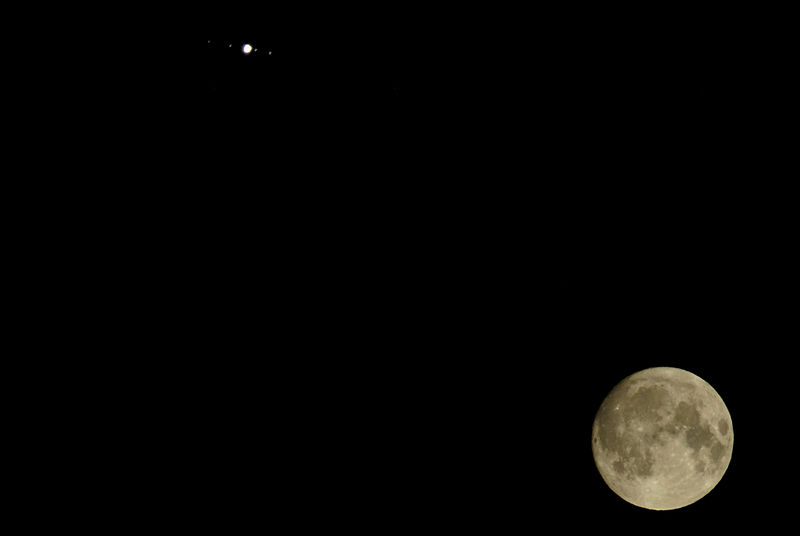FOUND: A Cuneiform Text That Shows How Babylonians Used Geometry to Track Jupiter

The Moon and Jupiter (Photo: Eric Kilby/Wikimedia)
Among the tens of thousands of cuneiform tablets and fragments dug up in the early 19th century from Mesopotamian cities, there are about 450 of those tablets and fragments, dated between about 350 B.C. and 50 B.C., that contain mathematical work on the night sky. Babylonians were excellent mathematicians and astronomers, and they recorded, in a base 60 number system, their calculations about the movement of the planets, stars and moon.
Among this work, though, there are four tablets, which describe a calculation involving a trapezoid, that have always puzzled scholars. They seemed to have something to do with Jupiter, but it wasn’t clear what was being measured. Babylonians had discovered many geometrical rules, but they were never applied in astronomy.
In a new paper, published in Science, Mathieu Ossendrijver, a specialist in Babylonian astral math at Berlin’s Humboldt University, links a fifth cuneiform text to those four trapezoidal procedures to show their purpose–they describe the progression of Jupiter through space. This is a classic mathematical strategy for measuring the movement of planets, but until now, it was thought to have been first discovered a millennium and a half later, in 14th century Europe.
This fifth text, like the other four, is part of the British Museum’s collection, one of the largest libraries of cuneiform tablets in the world, with 50,000 items just from Babylonia in the first millennia B.C. The text has never been published before, but it contains the key to the four mysterious trapezoid texts.
Like the trapezoid texts, the new text refers to Jupiter, but it uses arithmetic to measure its progression across the sky. Essentially, the text describes how much Jupiter moves in one day, at a few key points during its appearance in the Earth’s view. The text uses those data points to calculate an average daily displacement for the planet and a total value for its movement. Understanding that calculation, Ossendrijver is able to show that the trapezoid procedures are making the same one, only using an elegant geometrical technique that Europeans rediscovered in the mid-1300s, in Paris and at Oxford College, in England.
Every day, we highlight one newly lost or found object, curiosity or wonder. Discover something unusual or amazing? Tell us about it! Send your finds to sarah.laskow@atlasobscura.com.








Follow us on Twitter to get the latest on the world's hidden wonders.
Like us on Facebook to get the latest on the world's hidden wonders.
Follow us on Twitter Like us on Facebook